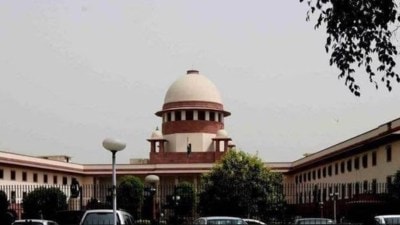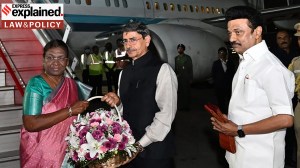Under the table
In 2003, the United Nations General Assembly designated 9 December as the International Anti-Corruption Day.

In 2003, the United Nations General Assembly designated 9 December as the International Anti-Corruption Day. In a year where one of the defining images was of our parliamentarians waving wads of cash during the trust vote and India actually slipped from 72nd position to 85th position in Transparency International’s corruption index, this is a good opportunity to reflect on our failure to tackle corruption.
There is no dearth of analysis on the causes of corruption. The nexus between politicians and bureaucrats, patronage politics, the structural failures of accountability, lack of transparency in administrative procedures and our own complicity in perpetuating corruption have been the subject of many newspaper articles and research. One aspect that has received relatively less attention is that of the systems and mechanisms put in place by the state to redress corruption, specifically the anti-corruption agencies tasked with investigation and prosecution.
Effective enforcement measures are one small element of a wider strategy to tackle corruption. The primary purpose they serve is to create an environment of deterrence. In a recent study on monitoring corruption in Indonesia, economist Ben Olken found that incidents of corruption — unaccounted expenditures on material procurement and wages—on a rural roads project reduced significantly when local officials were informed that their expenditures might be audited by the government. These findings demonstrate that in the absence of deterrents, corruption becomes a low risk activity. It is for this reason that strengthening anti-corruption enforcement mechanisms is a worthwhile endeavour.
At the centre, corruption cases against senior public officials are handled by the Central Vigilance Commission (CVC). The CVC is a statutory body with substantial independence. However, its role is merely advisory and this is its greatest weakness. The CVC has no powers to take action when its recommendations are not complied with. Not surprisingly, there are many instances of non-compliance. According to the CVC’s latest annual report, 225 cases imposing major penalties on officers were not complied with.
Additionally, every government department is entrusted with the specific responsibility of investigating vigilance cases for which Chief Vigilance Officers (CVO) are appointed. Delays in filing CVO positions are common. Moreover, these posts are usually occupied by officials within the department who handle vigilance responsibilities part time. This seriously undermines the objectivity and autonomy of the vigilance officer in conducting inquiries.
An interesting feature of the anti-corruption system is the presence of Lokayuktas (ombudsmen) in many states. The idea of creating an ombudsman was first proposed by the Administrative Reforms Commission in 1966. Since then, 17 states have set up Lokayuktas headed by retired judges. But most Lokayuktas are ineffective as they have no independent authority to undertake investigations and have limited resources. Moreover, the Lokayukta’s have no authority over other vigilance agencies such as the anti-corruption bureau.
When they do get reported, anti-corruption cases suffer from inordinate delays in investigation and convictions. According to the CVC, investigations can take anything between six months to three years. Conviction rates are dismal. A recent World Bank study reports that in ten years Rajasthan managed to convict a mere 411 public officials for corrupt practices. Part of the problem is the long delays in disposing of corruption cases — a result of failures within our judicial system. In 2005, Orissa had over 1,800 cases pending in trial courts. Judicial delays resulted in 12 per cent of the defendants dying before their cases came to court!
What can be done to reform our anti-corruption systems? Strengthening the powers and resources available to vigilance agencies both at the center and states is the first obvious step. The Karnataka Lokayukta and Andhra Pradesh Vigilance Commission are two examples where this has been done with considerable success and resulted in increased convictions.
The judiciary can play a role in initiating these reforms. The greatest strength of the current system in India is the considerable autonomy accorded to the CVC. This was the result of a 1997 Supreme Court judgment that ordered the CVC be transformed in to a statutory body. To ensure autonomy, the court directed that the CVC be appointed by a committee which includes the President and the leader of the opposition. Similar interventions can go a long way in strengthening vigilance agencies across the country.
Ultimately, reforms in enforcement mechanisms require political will. However, it is foolhardy to expect those who benefit from a system to try and fix it. Political pressures need to be created externally for systems respond. Public pressure is thus essential. The Right to Information Act is one tool through which we can monitor the work of anti corruption agencies and use this information to create political pressures for change. It is only when we as a citizenry draw on these tools and take a more proactive role in changing the discourse on corruption that the pressure for reforms will emerge.
The writer is a senior research fellow at the Centre for Policy Research, Delhi
Photos




- 01
- 02
- 03
- 04
- 05



























